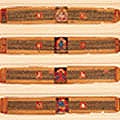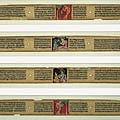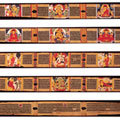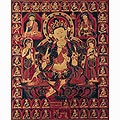 |
|
 |
 |
 |
 |
 |
 |
 |
 |
Buddhist Painting from India, Nepal, and Tibet
The production of Buddhist manuscripts illustrated with images of various Buddhist deities and/or scenes from the life of Shakyamuni flourished in Bihar and Bengal (present-day eastern India and Bangladesh) under the rule of the Pala dynasty (ca. 8th - 12th century). The illustrations of the gods that appear in these manuscripts were based on descriptions found in Indian texts intended to help the practitioner mentally invoke the form of the deity. These texts provide the artist with the basic schema of the image, detailing what an image should look like, from the posture, gesture, and color of the deity, to the attributes (objects he or she holds that symbolize specific powers or knowledge). Similarities among the Buddhist paintings in this section, which are from India, Nepal, and Tibet, stem from a variety of reasons. They include the continuous trade and contact provided by trade route linkages and the tendency of artists working abroad to emulate Indian models, but the main reason is due to the fact that the gods' depictions in the art of all three countries are ultimately dependent upon the meditation texts described above. In addition, during the Pala period, pilgrims, monks, and students from all over Asia, but particularly from Nepal and Tibet, flocked to the region's prominent religious centers; when they returned home, they took the Pala style with them in the form of portable items such as manuscripts and small sculptures. |
 |
 |
| 1 thru 4 of 4 |
 |
| view text only list |
 |

Ashtasahasrika Prajnaparamita |
 |

Gandavyuha |
 |

Ashtasahasrika Prajnaparamita |
 |

Green Tara |
 |
|
 |